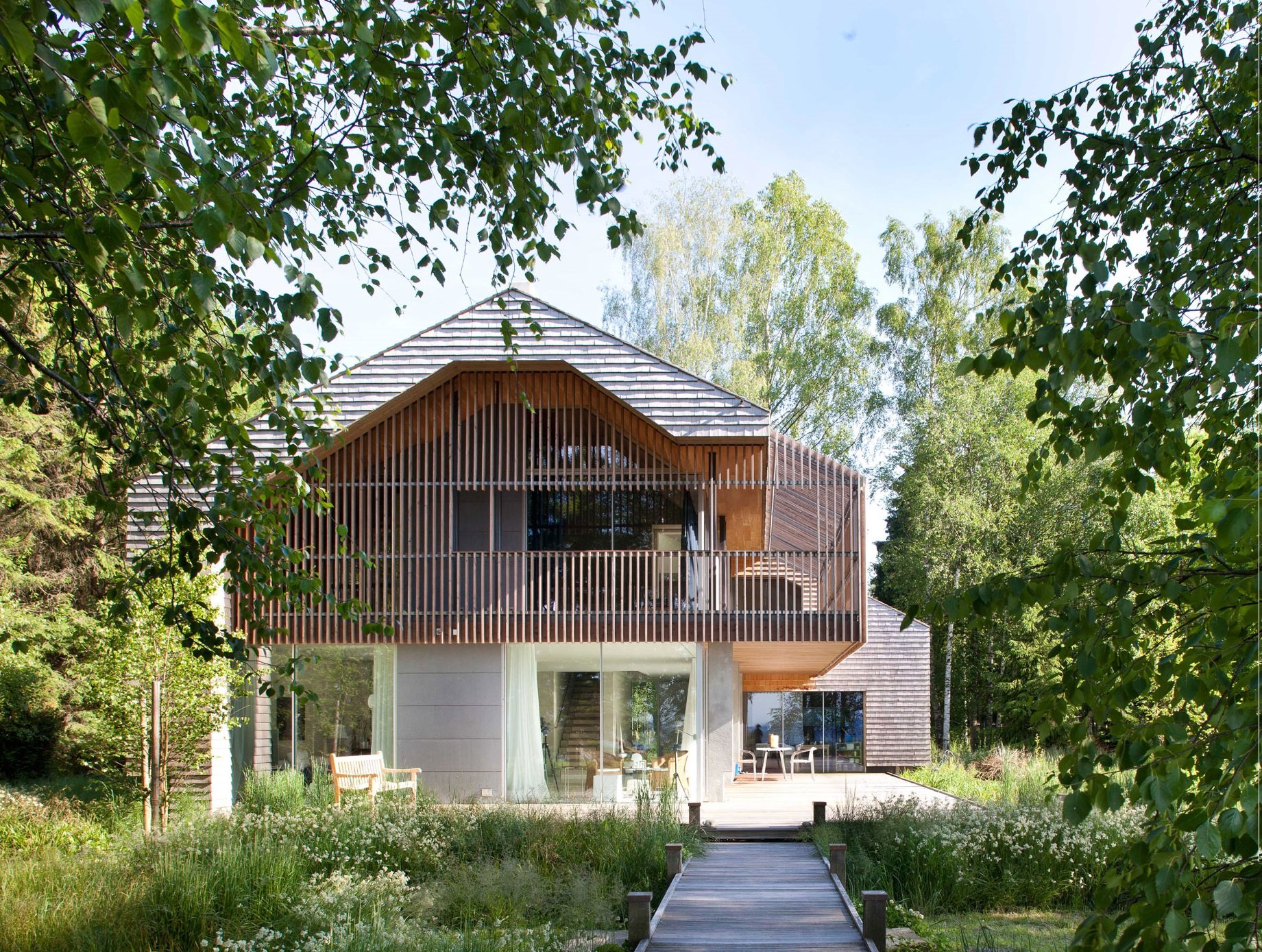#11646. Modern country house with wooden lattice facade surrounded by nature
This modern country house represents an excellent example of a harmonious combination of natural surroundings and architectural solutions. The building's facade features natural materials, dominated by wooden cladding arranged in horizontal rows on the upper section and roof gable.
Special attention is drawn to the second floor with its exquisite wooden lattice structure, creating an effect of lightness and permeability. This technique not only serves as a shading element but also creates an interesting play of light and shadow on the facade. The vertical wooden slats form a distinctive screen that protects the terrace from direct sunlight while maintaining a visual connection with the surrounding landscape.
The ground floor contrasts with the upper one thanks to light-colored finishing and large panoramic windows that visually lighten the entire structure. This solution creates the impression that the upper wooden volume seems to float above the glass base. The architect skillfully used a combination of open and enclosed spaces, allowing residents to enjoy views of the surrounding nature from virtually any point in the house.
In the design of the surrounding area, there is a noticeable tendency toward minimal intervention in the natural landscape: wild grasses and wildflowers approach right up to the house, while a wooden deck serves as an organic transition between the house and garden. This approach demonstrates the ecological orientation of the project and respect for the natural context.
When designing your own house, you can adopt several techniques used in this object: wooden slats as a shading element and decorative facade detail, contrasting combination of materials and textures to create visual interest, integration of large windows for maximum use of natural lighting, as well as a careful attitude toward the surrounding landscape, emphasizing the ecological nature of the solution.
